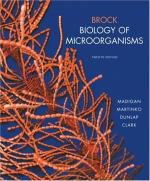|
This section contains 3,038 words (approx. 11 pages at 300 words per page) |

|
During the second half of the nineteenth century, the study of germs became known as microbiology. The period between 1854, when Louis Pasteur showed the relationship between germs and fermentation, and 1914 is now referred to as the golden age of microbiology. During these years, Rudolf Virchow and Pasteur finally laid to rest the antiquated notion of spontaneous generation and proposed biogenesis, the concept that life can come only from other life. In addition, they and other scientists made numerous advances in understanding the different types of germs, their structure, and how they behaved. Finally, and perhaps most important of all, Pasteur and other researchers proved that germs cause certain diseases and demonstrated how some of these diseases spread.
It was during the late 1850s that Pasteur and other scientists set out to prove that germs cause disease. This concept...
|
This section contains 3,038 words (approx. 11 pages at 300 words per page) |

|




